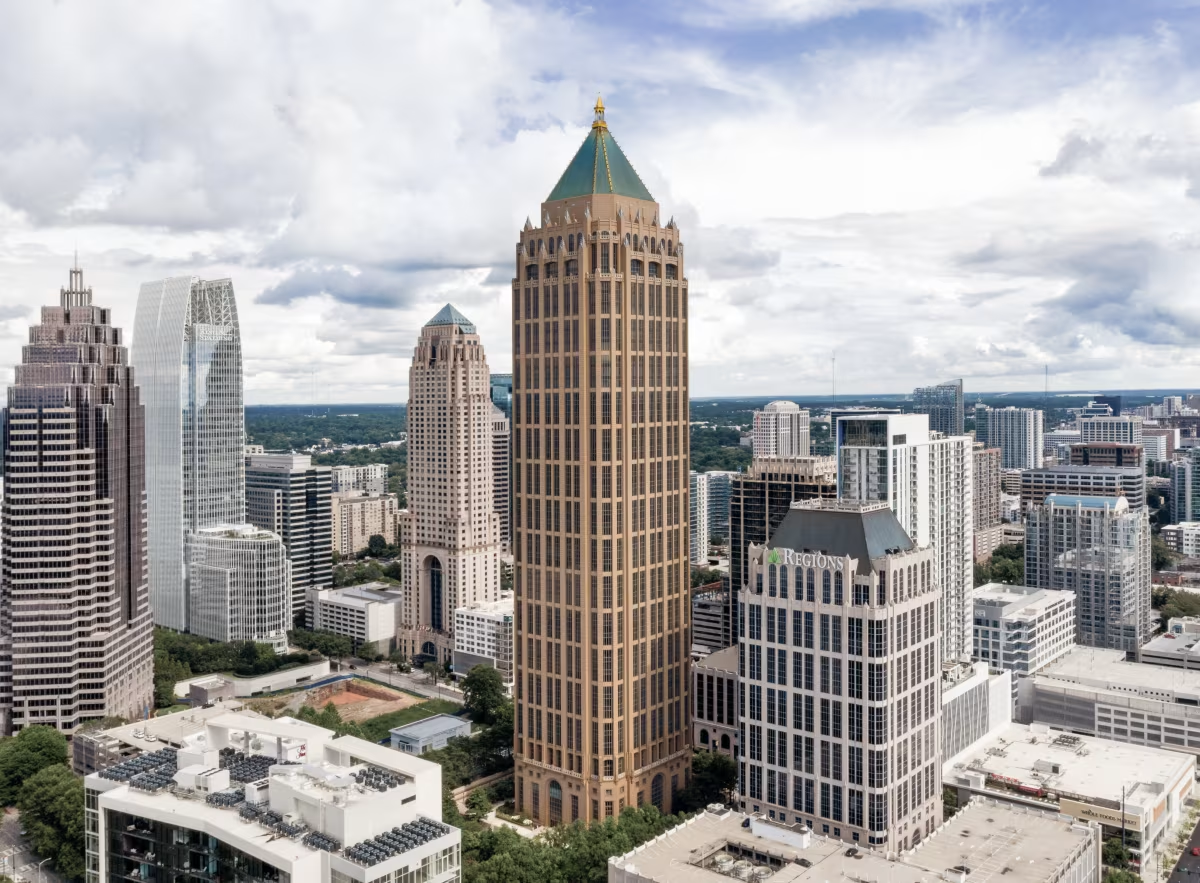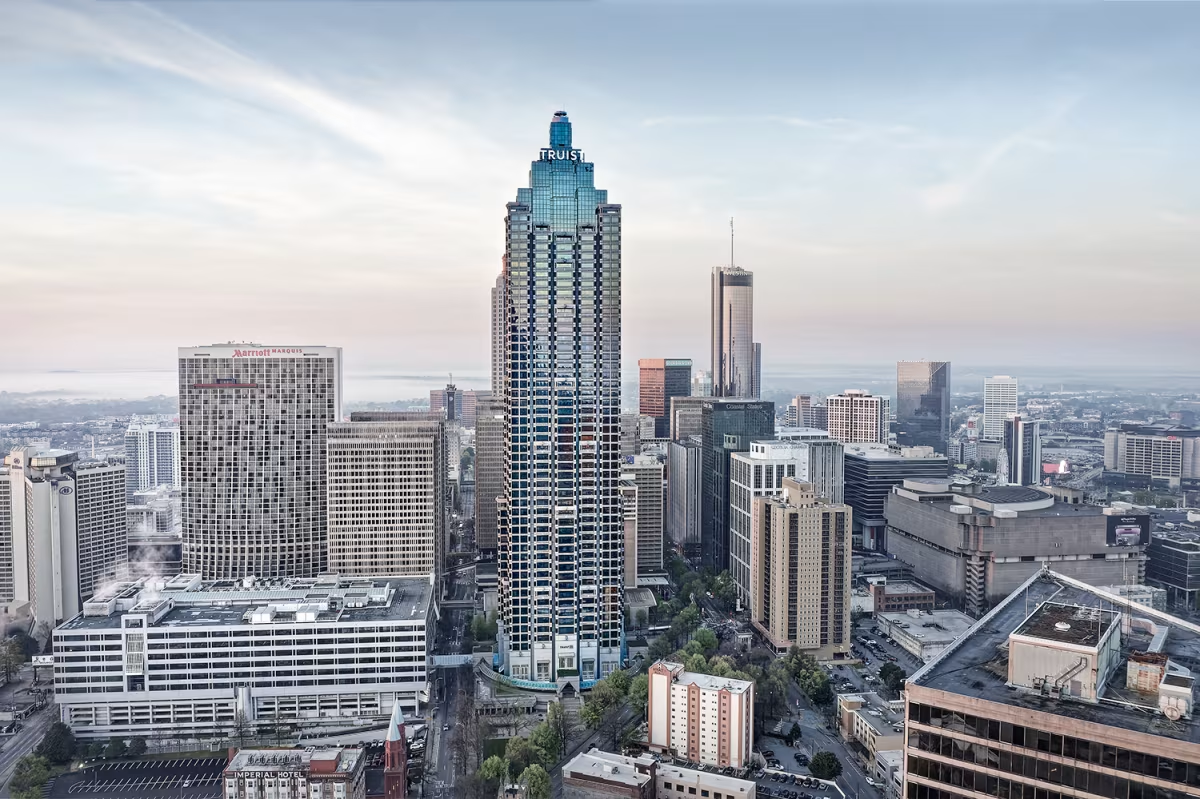One Atlantic Center vs Truist Plaza Building


Comparing the One Atlantic Center and the Truist Plaza Building is interesting because they both stand in Atlanta, GA, and were completed within 5 years of each other, but they were designed by different architects.
This offers a unique glimpse at how rival designers approached projects in the same city during the same era.
Height & Size
The Truist Plaza Building is clearly the larger tower of the two, both in terms of height and number of floors. It rises to 869ft (265m) with 60 floors above ground, while the One Atlantic Center reaches 820ft (250m) with 50 floors above ground.
Of course, each project may have faced different briefs or regulatory constraints, which we don't really know about and could also explain the outcome.
Architectural Style
Both the One Atlantic Center and the Truist Plaza Building were designed in line with the aesthetic conventions of the Postmodernism style.
The Truist Plaza Building was designed at a moment when the Postmodernism style was already in decline, making it more of a lingering expression of the movement. In contrast, the One Atlantic Center was built when the style still carried greater cultural weight.
Uses
Both the One Atlantic Center and the Truist Plaza Building were designed to serve as commercial towers, and that has remained their main use since their completion, serving similar roles in the urban fabric.
The One Atlantic Center also provides 2200 parking spaces.
Structure & Facade
The two towers rely on different structural systems, reflecting distinct engineering strategies.
The One Atlantic Center uses a Framed Tube In Tube structural system, which combines a strong central core with a perimeter tube of columns, while the Truist Plaza Building uses a Frame system, that relies on a regular grid of columns and beams to sustain its weight.
Yet, when it comes to their facade, they both employed the same solution, a Curtain Wall facade.
A curtain wall is a non-load-bearing facade hung from the structural frame. It is anchored to floor slabs and transfers only its own weight and wind loads, allowing for sleek, glassy exteriors.
| One Atlantic Center | Truist Plaza Building | |
|---|---|---|
| Johnson/Burgee Architects | Architect | John Portman & Associates |
| 1986 | Construction Started | 1989 |
| 1987 | Year Completed | 1992 |
| Postmodernism | Architectural Style | Postmodernism |
| Commercial | Current Use | Commercial |
| 50 | Floors Above Ground | 60 |
| 250 m | Height (m) | 265 m |
| 24 | Number of Elevators | 28 |
| Framed Tube In Tube | Structure Type | Frame |
| Concrete And Steel | Vertical Structure Material | Concrete |
| Concrete And Steel | Horizontal Structure Material | Concrete And Steel |
| Yes | Facade Structural? | Yes |
| Granite, Glass | Main Facade Material | Granite, Glass |
| The Beck Group | Main Contractor | J.A. Jones Construction Co. |
| Prentiss Properties | Developer | John Portman & Associates |
| Walter P. Moore | Structural Engineer | John Portman & Associates |
| GA | State | GA |
| Atlanta | City | Atlanta |
| 1201 West Peachtree Street | Address | 303 Peachtree Street NE |